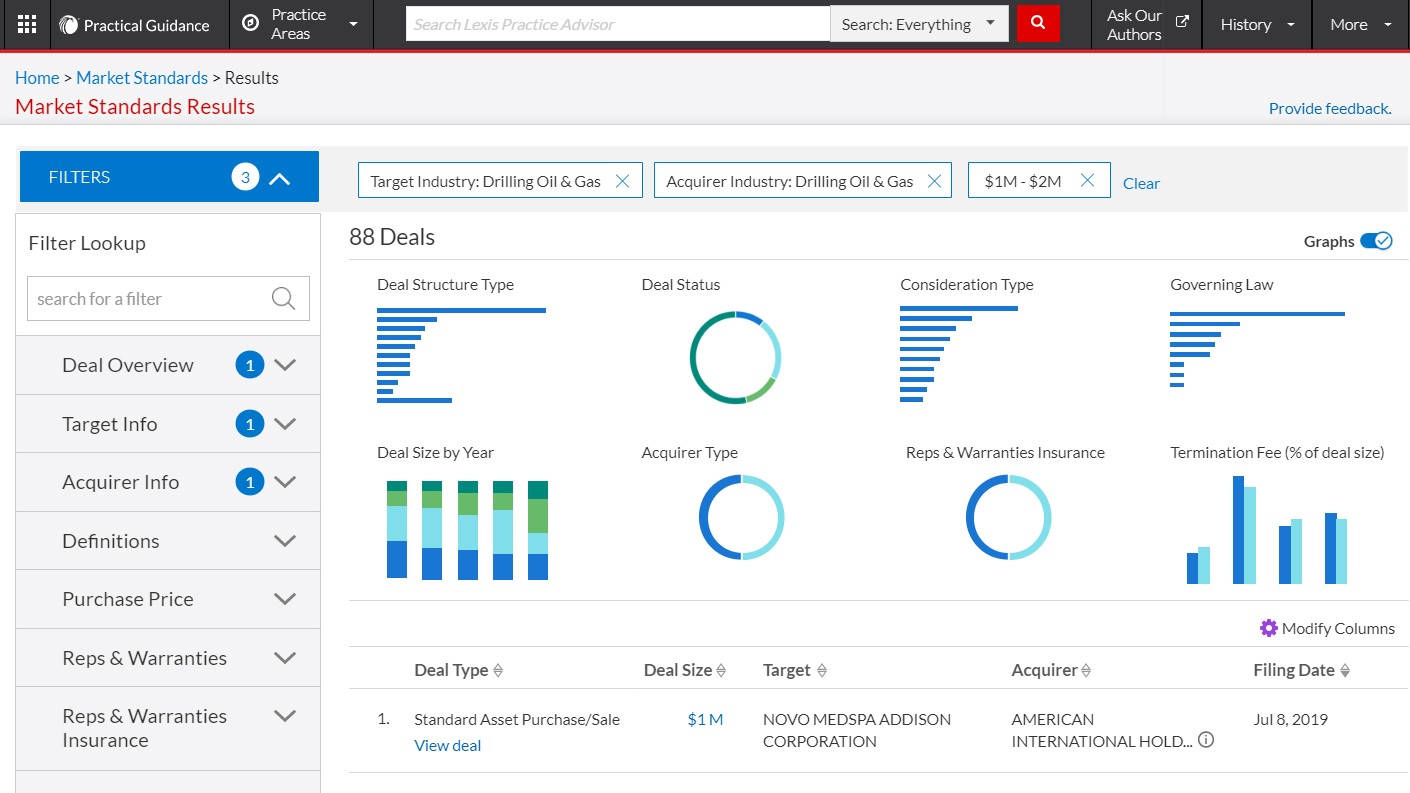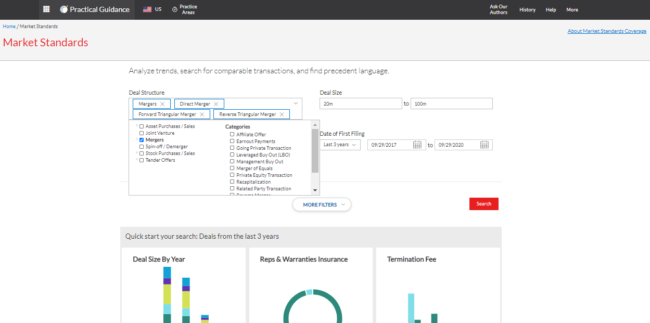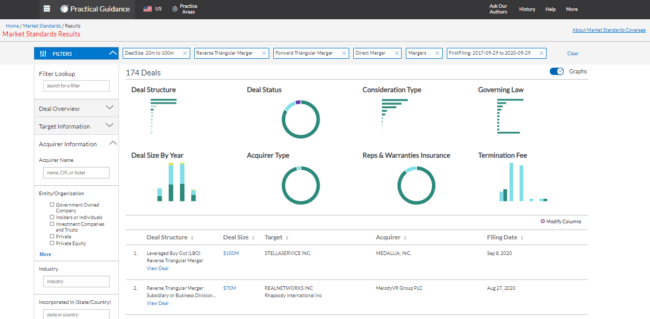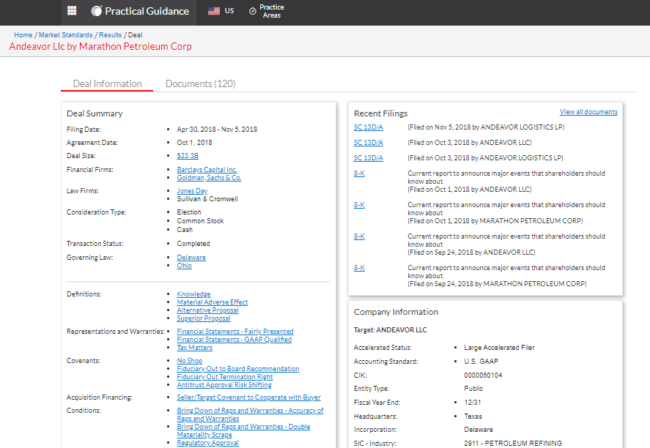LexisNexis says a new research tool it is launching today for searching, comparing and analyzing mergers and acquisitions is the most comprehensive and detailed database of publicly filed M&A deals available on the market.
Called Market Standards, it is part of Practical Guidance — the LexisNexis collection of practice-specific forms, clauses, checklists articles and practice notes. It is available to anyone who subscribes to the corporate M&A module of Practical Guidance, within both Lexis and Lexis+, the premium legal research platform the company launched Sept. 14.
This is the first of a planned series of practice-specific, data-based additions to Practical Guidance, all under the Market Standards name, Daniel Lewis, vice president of Practical Guidance, told me during a preview demonstration Friday. The next two in the series will cover corporate finance and labor and employment.
The M&A product released today is designed to enable M&A attorneys to search and compare transactions using detailed deal points, find precedential language, and see visualizations of trends relating to deals and transactions.
LexisNexis says this product is much more comprehensive and detailed than any other M&A research product on the market. It includes more than 33,000 deals from the past decade, which is six times more than anyone else offers, it says.
It is also twice as detailed as any other product, with analysis of as many as 150 deal points per transaction, the company says.
With analysis of new deals provided within 48 hours, Market Standards is also three times faster than other products in including new deals, LexisNexis says. This speedy analysis is accomplished through a combination of human review and advanced technology, LexisNexis says.
With this new tool, a user can analyze trends, search for comparable transactions, and find precedent language. A user can search Market Standards by a variety of filters, including deal structure, deal size, industry, date range and law firm.
Users have the ability to continue to add filters to search results and to modify the columns that show the search results in order to create a comparison view.
Users can also drill down into deals to see details of the deal and associated documents or specific clauses.
This information can be critical to an attorney in negotiating a deal, Lindsay Bringardner, director of product management for Practical Guidance, told me during Friday’s demo. If an attorney needs to know the going rate for a certain variable in deals of a particular kind and of a particular size in a specific industry, the attorney can find that information here.
It is also useful, Bringardner said, when an attorney in a negotiation needs to find out what the other side has agreed to (or conceded to) in the past.
She relayed the story one customer told her while testing the product. Opposing counsel in a negotiation asserted, “I would never agree to that kind of term.” Using Market Standards, the customer was able to reply, “Well, actually, a year and a half ago, you did agree to such a term.”
The primary competitor for this product is What’s Market, a part of Thomson Reuters Practical Law that provides a database of summaries of public deals.
The key difference in the Market Standards product, Lewis told me, is that it provides the actual filing data, including the documents. This allows more granular searching and more powerful visual analytics, he said.
 Robert Ambrogi Blog
Robert Ambrogi Blog


